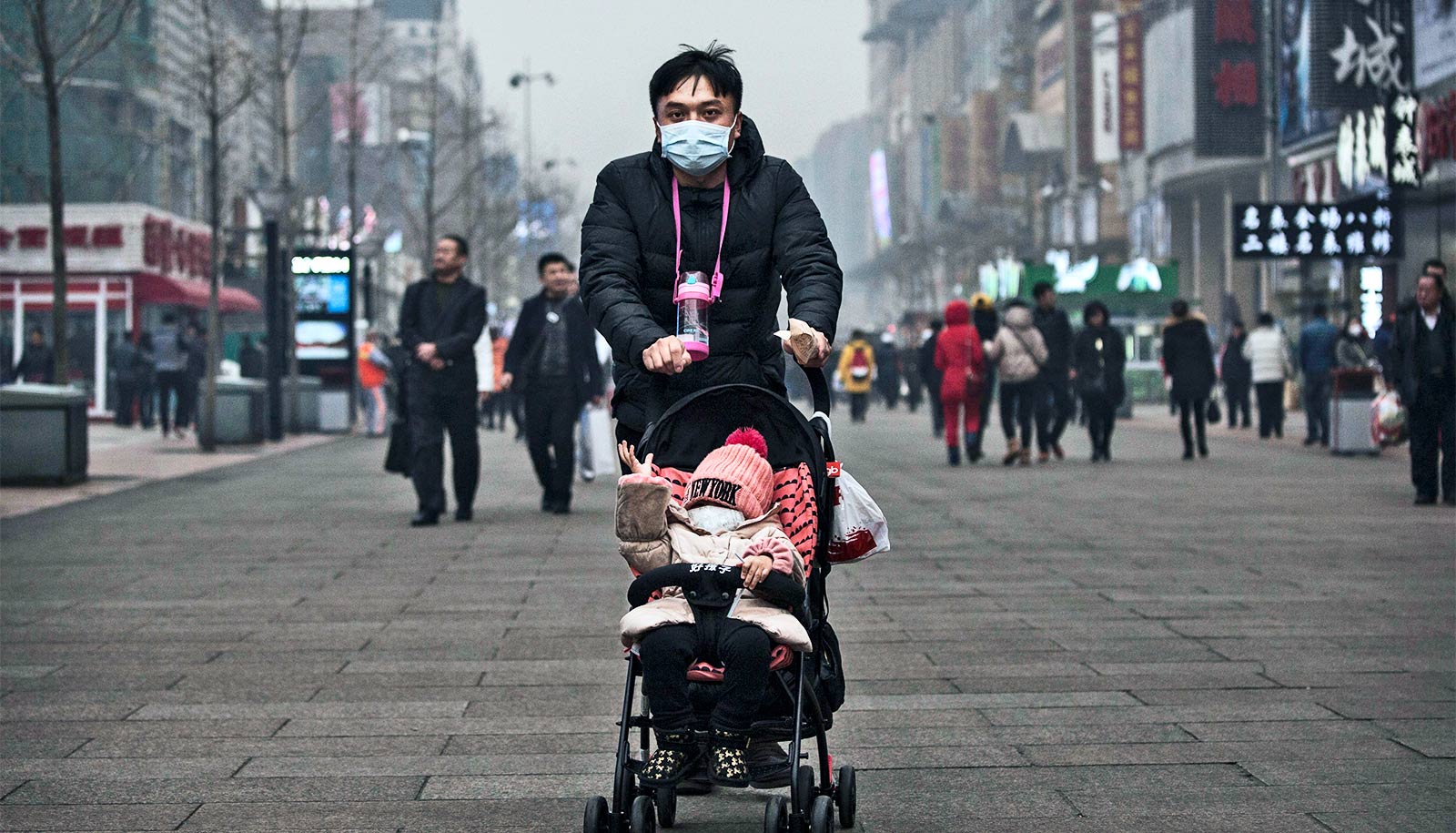
(Credit: Getty Images )
Ozone and your skin oils mix to create ‘Pig-Pen effect’
"Some people call this higher concentration of pollutants around the human body the personal cloud... we call it the 'Pig-Pen Effect.'"

When ozone and skin oils meet, the resulting reaction may help remove ozone indoors, but it can also produce a personal cloud of pollutants that affects indoor air quality, report researchers.
In a computer model of indoor environments, the researchers show that when ozone, a form of oxygen that can be toxic, reacts with skin oils carried by soiled clothes, it produces a range of volatile and semi-volatile gases and substances. Some researchers have likened the reaction to the less-than-tidy Peanuts comic strip character.
“When the ozone is depleted through human skin, we become the generator of the primary products, which can cause sensory irritations,” says Donghyun Rim, assistant professor of architectural engineering and an Institute for CyberScience associate at Penn State. “Some people call this higher concentration of pollutants around the human body the personal cloud, or we call it the ‘Pig-Pen Effect.'”
The substances the reaction produces include organic compounds, such as carbonyls, that can irritate the skin and lungs, says Rim. People with asthma may be particularly vulnerable to ozone and ozone reaction products, he says.
What’s on your skin?
According to the researchers, who report their findings in Communications Chemistry, skin oils contain substances, such as squalene, fatty acids, and wax esters. If a person wears the same clothes too long—for example, more than a day—without washing, there is a chance that the clothes become more saturated with the oils, leading to a higher chance of reaction with ozone, which is an unstable gas.
“Squalene can react very effectively with ozone,” says Rim. “Squalene has a higher reaction rate with ozone because it has a double carbon bond and, because of its chemical makeup, the ozone wants to jump in and break this bond.”
Indoors, ozone concentration can range from 5 to 25 parts per billion—ppb—depending on how the air is circulating from outside to inside and what types of chemicals and surfaces are used in the building. In a polluted city, for example, the amount of ozone in indoor environments may be much higher.
“If you have clean clothes, that means you might be breathing in more of this ozone, which isn’t good for you either.”
“A lot of people think of the ozone layer when we talk about ozone,” says Rim. “But, we’re not talking about that ozone, that’s good ozone. But ozone at the ground level has adverse health impacts.”
Wearing clean clothes might be a good idea for a lot of reasons, but it might not necessarily lead to reducing exposure to ozone, says Rim. For example, a single soiled t-shirt helps keep ozone out of the breathing zone by removing about 30 to 70 percent of the ozone circulating near a person.
“If you have clean clothes, that means you might be breathing in more of this ozone, which isn’t good for you either,” says Rim.
Your personal pollution cloud
Rim says that the research is one part of a larger project to better understand the indoor environment where people spend most of their time.
“The bottom line is that we, humans, spend more than 90 percent of our time in buildings, or indoor environments, but, as far as actual research goes, there are still a lot of unknowns about what’s going on and what types of gases and particles we’re exposed to in indoor environments,” says Rim. “The things that we inhale, that we touch, that we interact with, many of those things are contributing to the chemical accumulations in our body and our health.”
Rather than advising people whether to wear clean or dirty clothes, the researchers suggest that people should focus on keeping ground ozone levels down. Better building design and filtration, along with cutting pollution, are ways that could cut the impact of the Pig-Pen Effect, they add.
To build and validate the models, the researchers used experimental data from prior experiments investigating reactions between ozone and squalene, and between ozone and clothing. The researchers then analyzed further how the squalene-ozone reaction creates pollutants in various indoor conditions.
The team relied on computer modeling to simulate indoor spaces that vary with ventilation conditions and how inhabitants of those spaces manage air quality, Rim says.
In the future, the team may look at how other common indoor sources, such as candle and cigarette smoke, could affect the indoor air quality and its impact on human health.
Additional researchers from Penn State and the University of California, Irvine, contributed to the work.
The researchers are part of the Chemistry of Indoor Environment Consortium, a network of scientists studying indoor environments, which the Alfred P. Sloan Foundation supports.
Source: Penn State
The post Ozone and your skin oils mix to create ‘Pig-Pen effect’ appeared first on Futurity.
Share this article:
This article uses material from the Futurity article, and is licenced under a CC BY-SA 4.0 International License. Images, videos and audio are available under their respective licenses.


